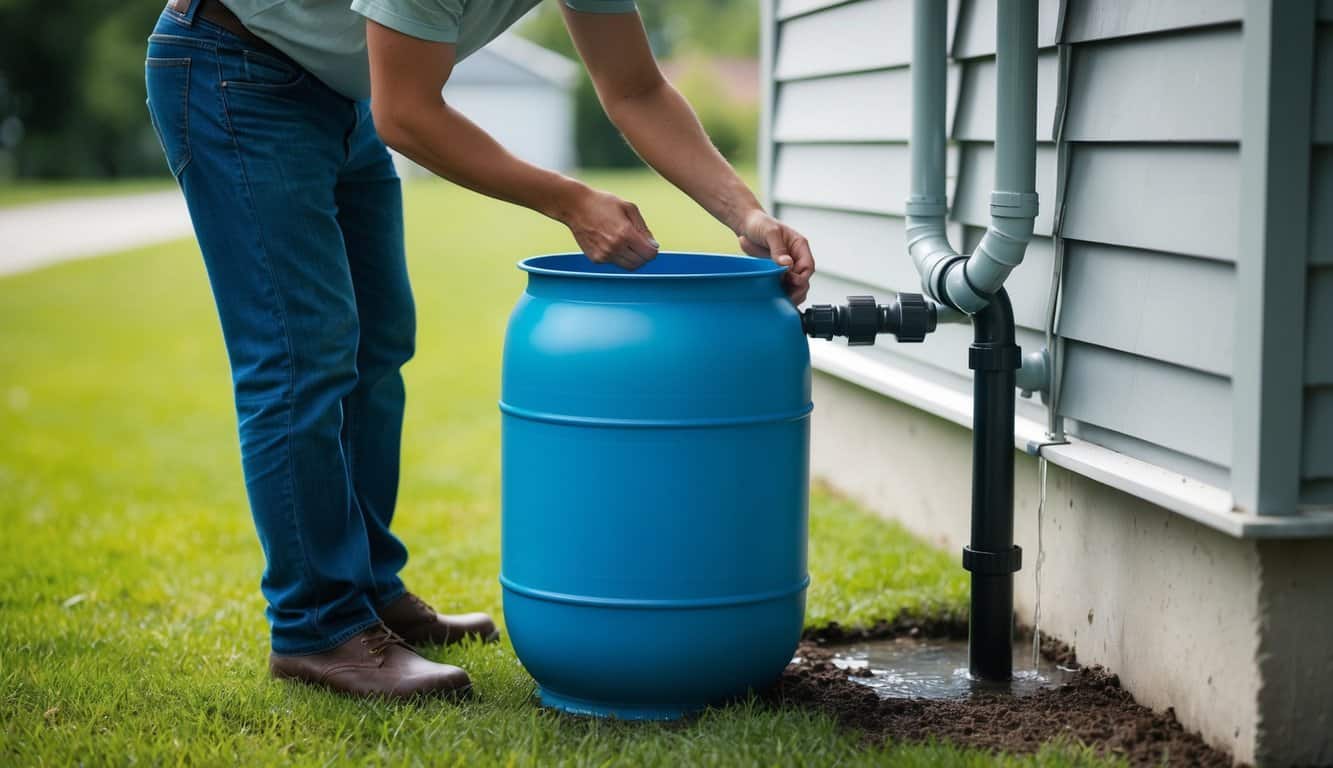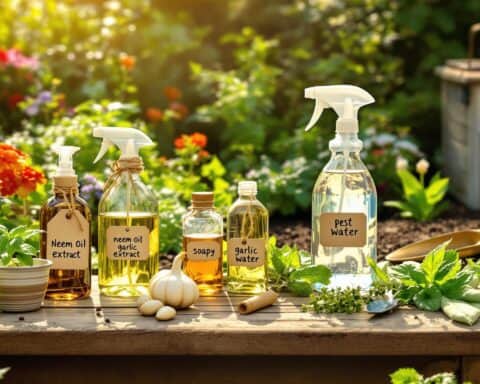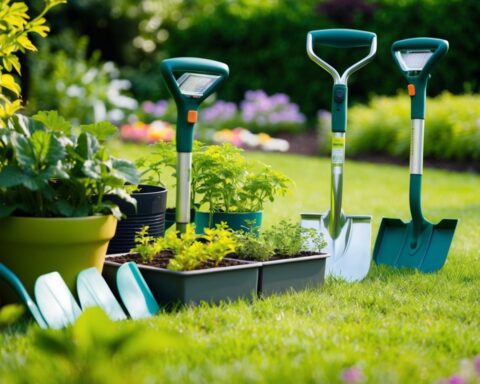Collecting and storing rainwater safely helps save water, lower bills, and support the environment. This process works by using gutters and downspouts to capture rain, then moving the water into a covered storage tank or barrel. Safe rainwater collection requires keeping out debris, insects, and harmful germs.
Homeowners can set up a system with a storage tank, a bacteria-resistant cistern, and a first flush diverter for better water quality. Basic rainwater collection systems can be easy to install and use for watering gardens, cleaning, or other non-drinking uses.
Proper rainwater harvesting is not only about saving water but also about keeping water clean and safe to use. This guide explains each step clearly so anyone can get started with confidence.
Understanding Rainwater Harvesting
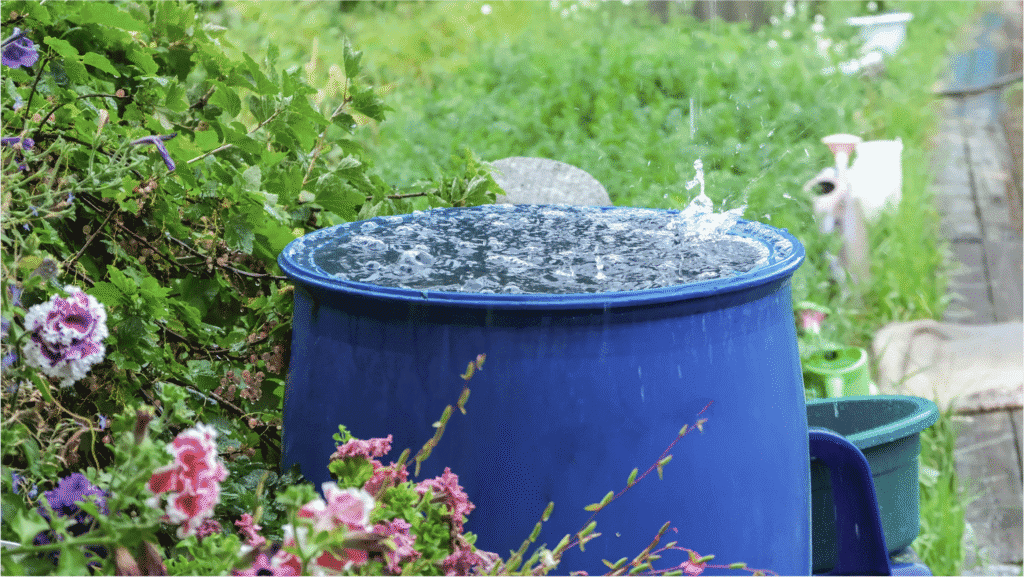
Rainwater harvesting allows homes and communities to collect, store, and use rainwater for different purposes. Systems can vary from simple barrels to more advanced setups that support water conservation and resilience during drought.
Principles of Rainwater Collection
Rainwater is collected from roof surfaces or other areas where runoff gathers. Gutters and downspouts move the water to storage containers, such as barrels or cisterns. Before storage, a filter or screen removes leaves, dirt, and other debris.
Stored rainwater is kept in sealed or covered containers to stop mosquitoes and prevent contamination. Regular checks of the system help spot any leaks or blockages. Simple maintenance goes a long way in keeping water clean and usable.
For best results, all materials used in the rainwater harvesting system should be safe for water collection. Roofs made from non-toxic materials, such as metal or tile, are preferred. This lowers risks if people plan to use the water for watering edible plants or for non-drinking household uses.
Types of Rainwater Harvesting Systems
There are two main types of rainwater harvesting systems: direct and indirect.
Direct systems use barrels or tanks directly connected to gutters to collect rain as it falls. These are often used for small gardens or landscape watering. Direct systems are simple and low-cost, making them suitable for homeowners.
Indirect systems store water in an underground or above ground reservoir. Pumps and pipes then transport the water to where it is needed. Larger properties or facilities may use these, along with filters and treatment units.
Advanced systems may include features like first-flush diverters or solar-powered pumps. These options can help with storage, access, and water quality. More details on system types are provided in the Texas Conservation in Your Backyard Rainwater Harvesting guide.
Benefits of Harvesting Rainwater
Rainwater harvesting reduces demand for municipal water, especially for landscaping or washing. Using harvested rainwater for tasks saves money and helps conserve local water resources.
This practice can lower water bills and offer a backup supply during drought or water restrictions. In urban settings, collecting runoff reduces flooding and helps keep polluted water from reaching rivers and lakes. It is part of green infrastructure that manages stormwater in a sustainable way.
Harvested rainwater can also be used to improve soil moisture around gardens and trees. While not safe for drinking without extra treatment, stored rainwater supports water conservation and community resilience. For more information, see this beginner’s guide to rainwater harvesting.
Designing a Safe Rainwater Collection System
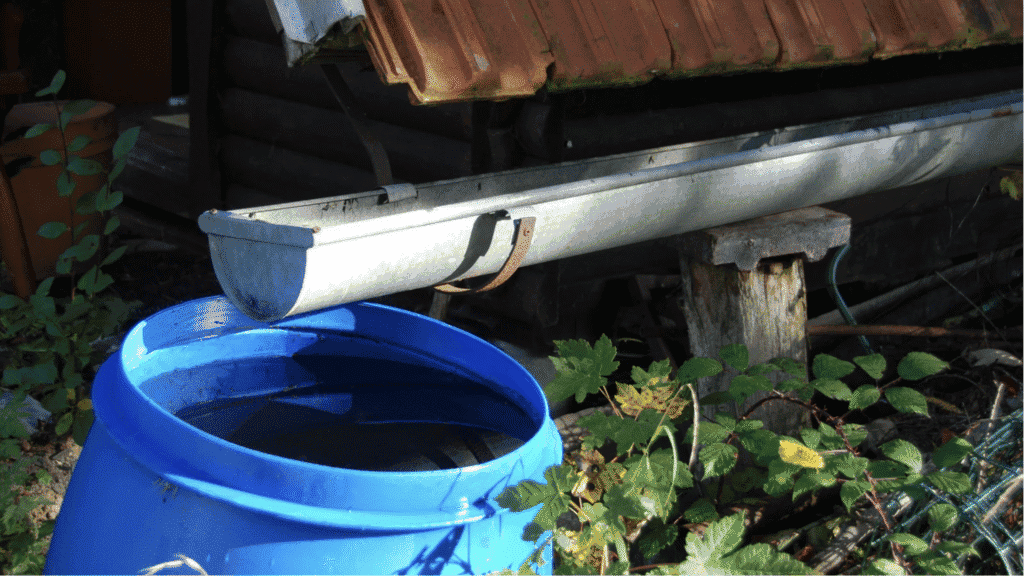
A well-designed rainwater collection system needs attention to surfaces, storage, and filtration. Careful planning at the start greatly reduces health risks and improves water quality throughout the process.
Choosing Collection Surfaces
The collection surface is typically the roof. The material matters because some roofing types may leach harmful chemicals or heavy metals into the rainwater. Metal or tile roofs are generally the safest choices, while roofs treated with toxic preservatives, paints, or containing asbestos should be avoided.
Roofs should be kept clean and free of animal droppings, leaves, and other debris. Gutters should have mesh screens to stop larger debris from entering the rainwater collection system. Regular roof and gutter maintenance is essential to reduce contamination risk.
Rooftop rainwater harvesting works best when the surface has a slight slope. This helps direct the flow to the gutters and prevents pooling. Avoid collecting rainwater from roofs with old or peeling materials, as these can introduce unwanted particles.
Selecting Storage Containers
Storage options include rain barrels, above-ground tanks, or underground cisterns. The best choice should be food-grade and made of materials that resist algae growth and bacterial buildup. Plastic, fiberglass, and concrete are common but must not release chemicals into the water.
Containers should be sealed to keep out insects and rodents, which can contaminate the water. Fitted lids, screens, and secure access points are important parts of the setup. It is recommended to use a dedicated outlet or spigot for easy water access and to avoid dipping hands or buckets directly inside.
For health and durability, water tanks and cisterns must be placed on stable ground and checked for leaks or cracks regularly. Tanks should be cleaned every year. Clean containers can help make water safer for drinking and other uses, as explained in this beginner’s guide to rainwater harvesting.
Planning for First Flush Diverters
A first flush diverter is an essential part of a safe system. Its main job is to keep the first rainwater, which often has the most contaminants from the roof, from getting into the storage tank. This device redirects the initial flow of water away from the main supply.
This process removes dirt, dust, pollen, and bird droppings that build up between rainfalls. After the first flush is complete, cleaner water is allowed into the storage container. Automatic diverters make the process easier and require less attention.
Regular checks and cleaning of first flush diverters are important. This keeps the system working and reduces the chance of contamination. First flush systems are supported by many rainwater system guides, including those in Rainwater Harvesting 101.
System Sizing and Location Considerations
System size depends on roof area, rainfall patterns, and how much water is needed. Larger roofs collect more water. In areas with frequent rain, smaller storage may be enough. For drier regions, larger cisterns or tanks are needed to hold water between storms.
Calculating needs can be done by multiplying the area of the roof by the average rainfall and adjusting for losses. It is important to store enough water for times when it does not rain. Storage should be placed where it is shaded and protected from animals and direct sunlight, which can lead to algae growth.
The location of all parts—the collection surface, gutters, first flush diverter, and storage—should allow easy maintenance. Choose safe, stable ground that is not prone to flooding or pollution from nearby sources. For more guidelines on this, see the Texas Manual on Rainwater Harvesting.
Rainwater Collection and Filtration Processes
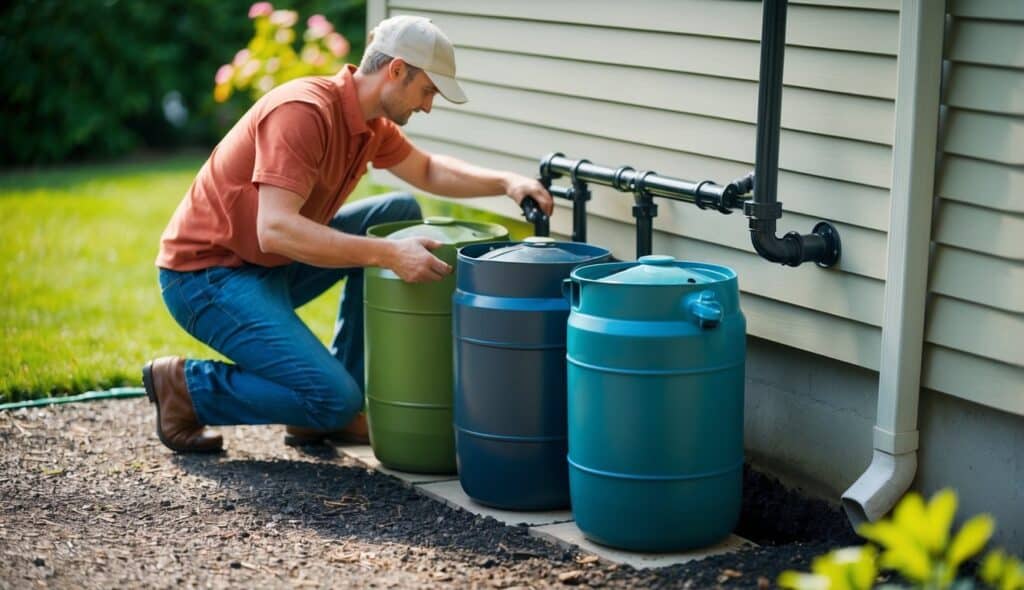
Rainwater harvesting systems need careful planning and ongoing maintenance. Proper collection and effective filtration protect the stored water from dirt, chemicals, and stormwater runoff that may carry pollutants or debris.
Collecting Rainwater Efficiently
To collect rainwater efficiently, homeowners often use rooftops as the main catchment surface. Clean, non-toxic roofing materials are best, since water quality depends on the type of roof. Gutters and downspouts direct rainwater from the roof to storage tanks or barrels.
Many systems use a “first flush” device. This tool diverts the initial rainfall, which may wash away leaves, dirt, and other pollutants from the roof. After the first few gallons are discarded, cleaner water flows into the system.
Downspout screens, gutter guards, and leaf baskets further improve collection by reducing large debris. Proper design limits water pollution and makes later steps like filtration more effective. Learn more about roof and gutter systems for rainwater collection.
Filtration and Pre-Treatment Methods
Filtration is vital to remove small particles and contaminants from rainwater, especially if the water is to be used for drinking or cooking. The process usually starts with pre-filters to trap sand, fine leaves, and sediment.
A typical filtration setup may include:
- Leaf screens: Block larger organic matter.
- Sediment filters: Remove smaller particles, like dust and grit.
- Activated carbon filters: Reduce odors and dissolve chemicals.
For extra safety, some systems use UV light disinfection or chemical treatment (such as chlorine), though this depends on intended water use. Regular maintenance of filters ensures they keep working well.
Without proper filtration, water can appear clear but still hold microscopic pollutants. Filtration systems help make rainwater safe for storage and later use.
Preventing Contamination
Rainwater stored without safeguards can become contaminated through bacteria, pathogens, or chemicals from the collection surface. Sealed tanks are recommended to prevent insects, animals, and light from entering, which helps block algae and mosquito breeding.
Regular checks for leaks or cracks in tanks are important because they can allow stormwater runoff to mix with the stored water. Overflow pipes should direct excess water away from foundations and gardens that may contain chemicals or fertilizers.
Cleaning the collection area and storage tanks several times a year supports safe harvesting. Filters must be replaced as needed, and first flush systems should be checked to make sure they remove early-stage pollution from roofs, keeping contaminants out of the water supply.
Storing Rainwater Safely
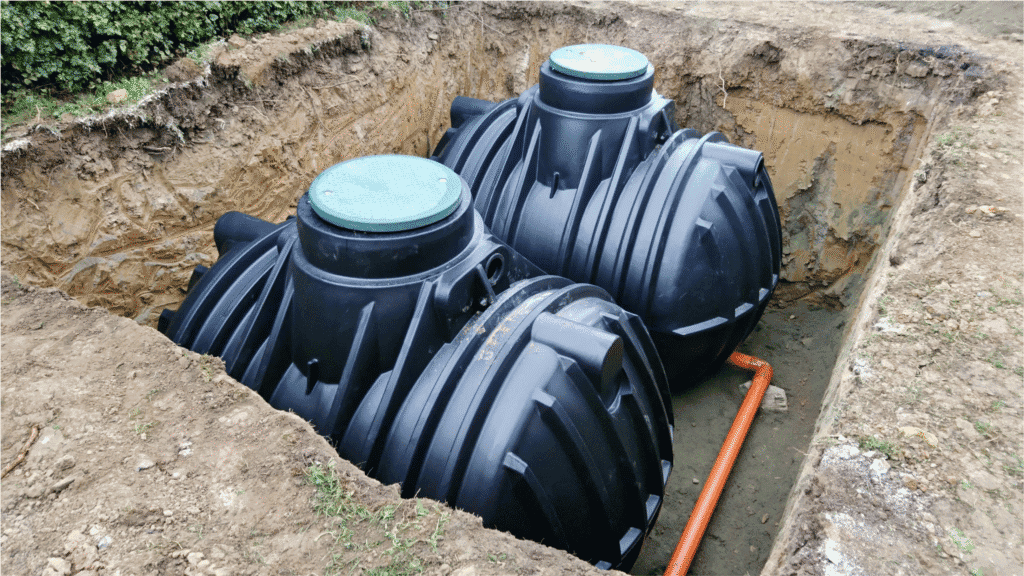
Safe storage prevents contamination, keeps water quality high, and helps protect a rainwater supply from germs or chemicals. Taking smart steps at each stage reduces risks and makes rainwater more useful for different needs, including gardening or, when properly treated, for drinking.
Water Quality and Potability
Water quality depends on several factors such as collection surfaces, storage materials, and maintenance. Roofs, gutters, and pipes must be clean and made from safe materials that do not rust or leach chemicals. Plastic and food-grade metals are better choices for cisterns and barrels.
Covered storage vessels help keep out debris, insects, and sunlight, which can all harm water quality. Using a first-flush diverter removes the initial, often dirty, rainwater before it enters the storage system. This simple step can lower the level of contaminants.
Rainwater is not automatically potable. It may contain dust, bird droppings, pollen, or other contaminants. Before considering it for drinking, the water should be filtered and disinfected to remove germs and make it safe for use as potable water. Learn more about rainwater harvesting basics.
Safe Storage Practices
Safe rainwater storage requires containers that are strong, clean, and sealed. Cisterns and barrels should have tight lids and screens to keep out animals, insects, and leaves. Storage tanks should be made from materials labeled for water storage. Avoid barrels that have held toxic or chemical products.
Regular maintenance is needed. Tanks should be inspected and cleaned at least once a year. Gutters and screens must be checked and cleared of debris often. If pumps are used, they need to be cleaned as well to avoid spreading germs through the water system.
Proper storage location matters. Keep barrels or cisterns away from direct sunlight to prevent algae growth. Place containers on a flat, sturdy surface to avoid tipping or damage.
Addressing Germs and Pathogens
Rainwater can pick up germs or dangerous microorganisms that make people sick. Bacteria, viruses, and parasites are major risks if water is not treated correctly. A cistern or tank without proper coverage or filtration is especially vulnerable to these threats.
Simple steps can help minimize germs. A tight-fitting lid and strong screens keep out rodents, birds, and insects. Water that will be used as potable water should always be filtered—preferably using a filter designed for biological contaminants.
Disinfection is needed for drinking. Boiling, using chlorine (unscented household bleach), or UV treatment can kill most germs and pathogens. For routine gardening, these steps are often not needed, but for household use or drinking, they are essential. For tips on keeping stored rainwater clean, review trusted guides and follow local regulations.
Using Harvested Rainwater Responsibly
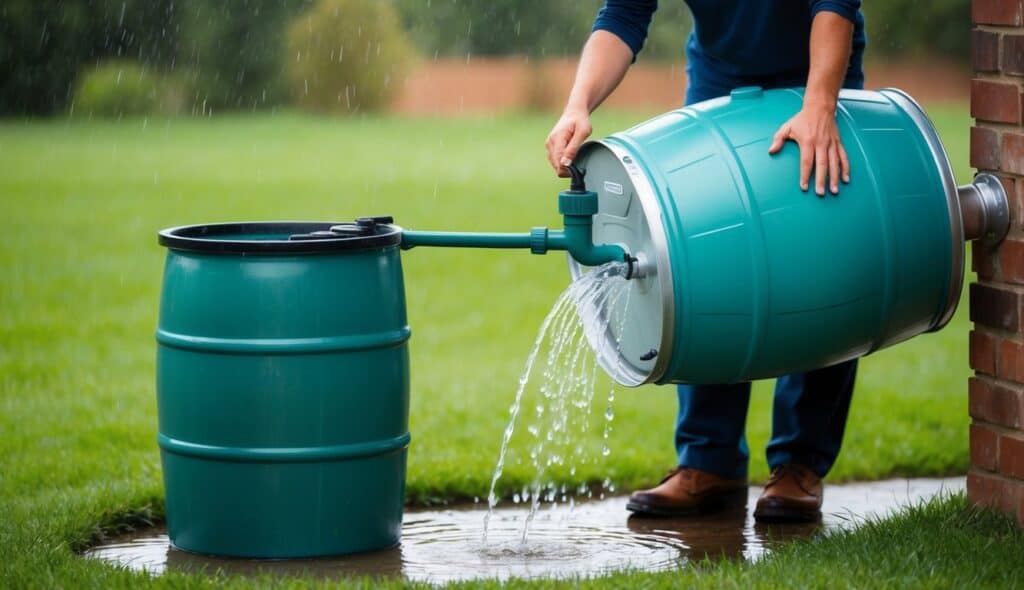
Rainwater can be a reliable resource for gardening, home use, and land management. When used properly, it supports healthy plants, prevents environmental harm, and can help lower water bills.
Irrigation and Landscaping Applications
Rainwater works well for watering gardens, lawns, and ornamental plants. It is free of chlorine and chemicals often found in tap water, making it gentle on roots and leaves. Many gardeners notice that plants respond well to rainwater because it is naturally soft.
Homeowners often set up rain barrels or cisterns to collect enough water during storms. Using collected water during dry spells can keep gardens green while lowering reliance on municipal supplies. Installing drip irrigation systems or soaker hoses helps use rainwater efficiently, so less is wasted.
Some regions may have rules about how to use rainwater outdoors, so it is important to follow local regulations. Good filters, screens, and covers also help prevent debris from clogging irrigation tools or harming plants. More tips for using rainwater in the yard can be found at this rainwater harvesting guide.
Reducing Soil Erosion and Runoff
Directing collected rainwater to specific garden beds or landscapes can reduce soil erosion caused by heavy rainfall. When water is gathered and slowly released to the ground, it soaks in rather than flowing away, which helps retain soil nutrients and prevents loss of topsoil.
Using rainwater in this way can also minimize stormwater runoff. Less runoff means fewer pollutants are washed into nearby streams and drains. Installing rain gardens or swales is an effective landscaping practice that uses harvested water and controls erosion at the same time.
For best results, use covered tanks and regular maintenance. Check for leaks and keep outlets free from blockages. This keeps both the rainwater system and the environment healthier. More details can be found from Rainfall Management – Illinois Extension.
Supplementing Household Water Needs
Harvested rainwater can be used inside the home for certain tasks, saving money and reducing the demand on city water. Common uses include flushing toilets, washing cars, and cleaning outdoor equipment. With proper filtration and disinfection, some people use it for laundry or even drinking, but this requires extra care.
It is important to install a good filtration system and monitor filters regularly, as recommended in this rainwater collection guide. Tanks should be bacteria-resistant and kept clean to avoid health risks. Pumps move water where it is needed in the house.
Not all areas allow indoor rainwater use, so homeowners should check local laws. Using harvested rainwater wisely can help households conserve resources and enjoy a more sustainable lifestyle.
Regulations and Ongoing Maintenance
Rainwater harvesting must follow city or state laws and proper practices to protect health. Safe storage requires regular inspection, cleaning, and careful system management.
Understanding Local Regulations
Rules for rainwater collection vary by location. Some cities or states have specific codes for installing and using rainwater harvesting systems. For example, California requires system components to be clearly labeled and may require permits before any setup begins. Tree branches or vegetation must be trimmed to keep the collection area free of debris, which can contaminate stored water.
Failure to comply with these laws can result in fines or removal of the system. Safety guidelines may cover how tanks are sealed, where harvested water is used, and what signage is needed. It is important to contact the local government or water board to confirm requirements before starting any project. Up-to-date guidance can usually be found on city or state websites. In Los Angeles, detailed rules are shared by LA Sanitation on rainwater harvesting.
Routine Inspection and Cleaning
Regular inspection is necessary to prevent hazards and ensure water stays clean. The entire system—including gutters, screens, tanks, and pipes—should be checked for damage, blockages, leaks, or signs of algae. Any visible debris or buildup must be cleared before it enters storage tanks. Keep all storage containers tightly covered to block mosquito breeding and protect children and animals. Inspect tank openings and covers for cracks or gaps.
A maintenance schedule helps users keep track of cleaning routines. Some recommend checking parts monthly, and deep cleaning tanks every six months. Keeping up with routine care will help prevent system failures and keep water suitable for its intended use.
Long-Term System Upkeep
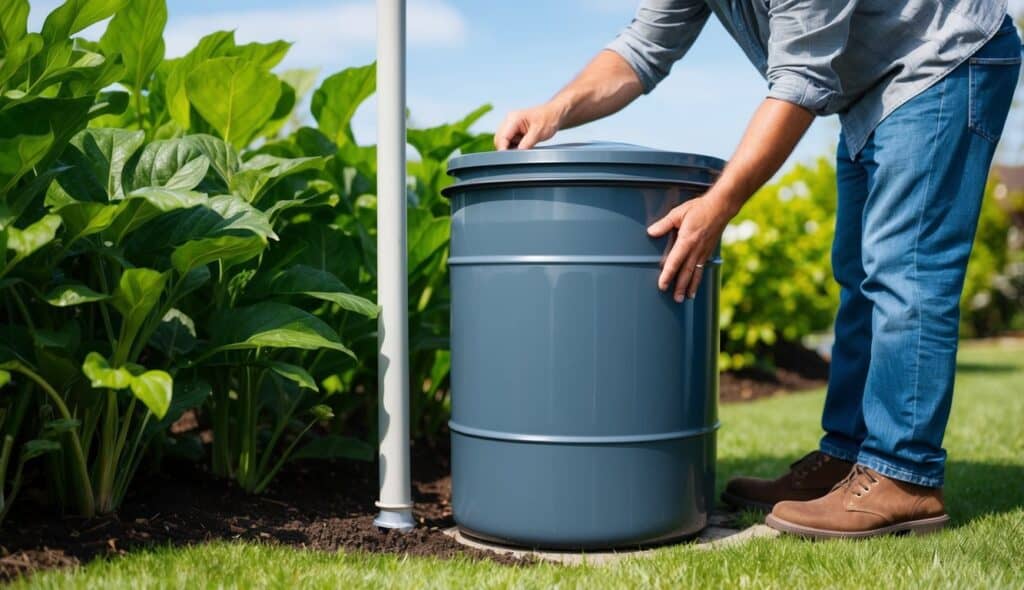
Long-term care goes beyond simple cleaning jobs. Storage tanks should be examined for cracks, rust, or corrosion that could affect water quality. It is important to remove sediment from the bottom of the tank regularly. Purification and filtration systems must be maintained and filters changed as instructed by the manufacturer.
Labels and instructions on the system should stay visible and up-to-date. Owners need to record all maintenance work, repairs, or upgrades in a logbook. As weather and local regulations can change, it is good practice to review the EPA’s rainwater reuse guidelines and make updates as needed each year. Well-maintained systems last longer and reduce the risk of costly repairs.
